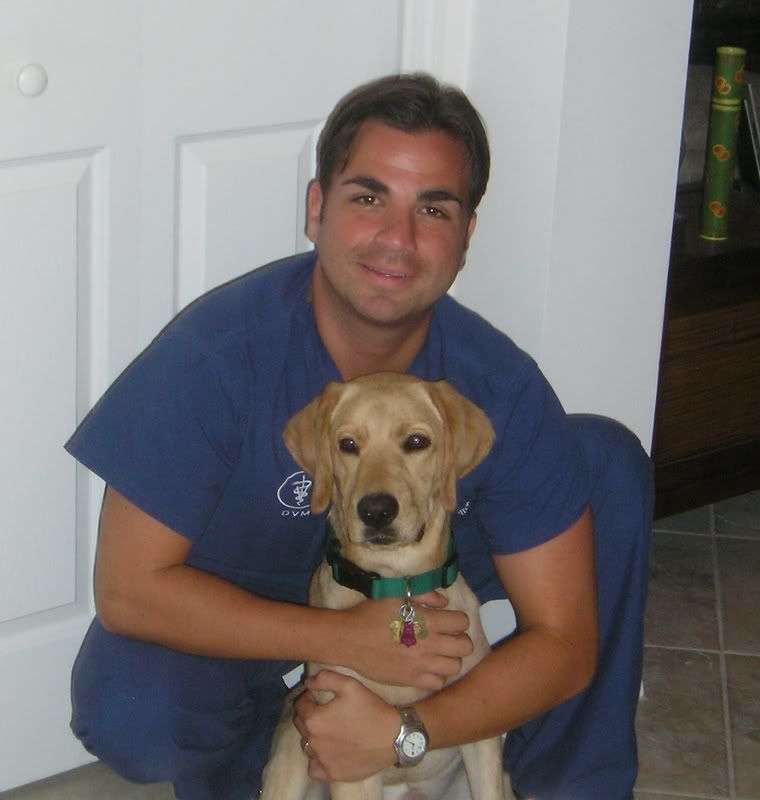Transcript from this week's episode of The Web-DVM:
Almost everyone knows a friend or acquaintance who is diabetic. What most people may not realize is that diabetes may be present in their own home, possibly in a feline friend.
Diabetes is a group of diseases that result from either inadequate insulin production or the inability of cells to respond to this hormone.
The main characteristic of diabetes is the presence of high levels of glucose in the blood…this is known as hyperglycemia.
In humans, one type of this disease is known as Type I or insulin-dependent diabetes. This illness results from the body’s immune system destroying the cells that make insulin. This is the predominant form of diabetes in our canine companions and there is no known way to prevent it.
Type II, or non-insulin dependent diabetes, accounts for 90-95% of diabetes in people and 85-90% of cases in cats. In this instance, the beta cells of the pancreas that produce insulin either become exhausted or they fail to respond to signals to produce the hormone. The important aspect of this to remember is that it is possible for treatment to lead to a remission of the disease.
Although the true incidence of feline diabetes is not precisely known, estimates for North America show that about 1 in every 200-400 cats develop this disease. What is important to remember is that as our cats have developed a tendency towards obesity, diabetes cases have risen rapidly.
Cats with diabetes often go extended periods of time with no real sign that anything is wrong. When signs do appear, the first indications are a cat who needs to use the litter box more frequently and who is drinking greater amounts of water. Unfortunately, cat owners are not always aware of these signs, especially if their kitty often goes outdoors. This means that many cats aren’t diagnosed for months after the onset of diabetes.
Without diagnosis and treatment, diabetes will eventually cause a metabolic condition known as ketoacidosis. This leads to dangerous changes in the blood chemistry, dehydration and eventually, death.
When cats are seen by a veterinarian, this disease is often diagnosed with a simple blood test. Hyperglycemia or any glucose in the urine (glucosuria) is often indicative of diabetes.
Unlike diabetic dogs who will be on insulin replacement for the rest of their lives, it is possible to treat cats and allow for remission.
The goal of treatment in cats is to restore the functionality of the beta cells and their ability to produce insulin. In fact, new evidence is now showing that high protein, low carbohydrate diets are instrumental in helping cats defeat diabetes. In short, although your feline friend may need insulin initially, you might be able to reduce or even eliminate this medication as you help the cat lose weight.
As with any medical condition, the very best source of information will be your veterinarian. He or she can steer you through the diagnosis and treatment process and then help you with monitoring your pet’s progress and potential recovery.
This is Roger Welton reporting, for The Web-DVM.
Dr. Roger Welton is the President and chief veterinarian at Maybeck Animal Hospital in West Melbourne Florida, as well as CEO of the veterinary advice and health management website Web-DVM.net.
Dr. Roger Welton is the President and chief veterinarian at Maybeck Animal Hospital in West Melbourne Florida, as well as CEO of the veterinary advice and health management website Web-DVM.net.




1 comment:
hrwecmsqt
ugg ムートンブーツ
uggブーツ
ugg ブーツ
アグ 5803
アグ モカシン
[url=http://www.japanwinterboots.com/]ugg 新作[/url]
[url=http://www.snowbootstoyou.com/]ugg[/url]
[url=http://www.annksnowboots.com/]アグ 5803[/url]
[url=http://www.chanluuoutletforjp.com/]chan luu[/url]
[url=http://www.chanluuofficials.com/]chan luu アウトレット[/url]
http://www.chanluuoutletjapan.com/ chanluu japan
http://www.chanluuofficialsjp.com/ chan luu ネックレス
http://www.2012bootsforjp.com/ ugg ブーツ
http://www.thebestforjp.com/ ムートンブーツ ugg
http://www.ilovetheboots.com/ アグアウトレット
Post a Comment